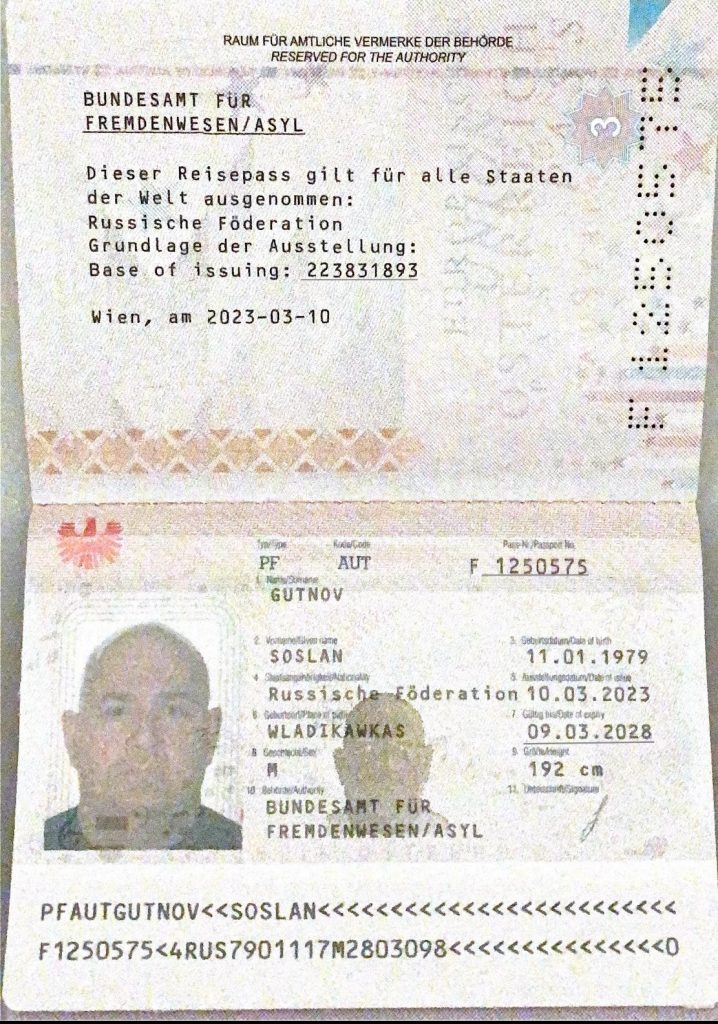
The first part of the publication told the life story of a Ukrainian woman, the wife of a captured Ukrainian Armed Forces soldier, who searched for her missing husband on her own but fell into a skilful and cynical trap set by a group of Russian FSB agents.
In the continuation of this article, we will tell you about the details of this story.
So, after the fact of her husband’s captivity was established, Maria contacted the Defence Intelligence of Ukraine’s Coordination Headquarters for the Treatment of Prisoners of War, provided all available information and waited for news of the exchange. However, as we mentioned earlier, this process is quite sensitive, depends on many factors, and is therefore slow. This is exactly what the fraudsters, who will be discussed below, took advantage of.
In particular, the coordination work on the exchange of prisoners on the Ukrainian side is carried out by the aforementioned Coordination Headquarters, while on the Russian side these functions are performed by a similar unit of the Russian Ministry of Defence in cooperation with the GRU of the Russian Ministry of Defence. It is this unit that compiles the lists of Ukrainian prisoners of war, grades them according to their ‘importance’, and coordinates the work on ‘filtering’, collecting information and further exchange. Thus, it has all the information about each Ukrainian prisoner of war, his family members, addresses of residence in Ukraine, personal data, etc.
Given this functionality and the large amount of sensitive information, it was decided to implement a cynical and fraudulent scheme to seize funds from family members of Ukrainian prisoners of war, promising their early release from captivity. The scheme began to be implemented in cooperation with the relevant unit of the Russian Federal Security Service and with the involvement of an agent network.
For example, using the example of our Maria, the fraudulent scheme worked as follows:
- The ‘Coordination Headquarters for the Exchange of Prisoners of War’ of the Russian Ministry of Defence formed the relevant databases of Ukrainian prisoners of war and sent the information to the relevant unit of the Russian FSB;
The ‘relevant unit’ of the FSB identified relatives of Ukrainian prisoners of war and methods of establishing contact with them;
A resident of the FSB received the terms of reference for the implementation of the scheme with the data of relatives of prisoners of war and distributed functional tasks among the members of the agent network;
The members of the agent network established contacts with relatives of prisoners of war and deliberately created conditions for the acquisition of the victims’ funds in exchange for a promise to facilitate the early release of prisoners;
The members of the agent network provided pre-prepared details of foreign bank cards, took possession of the funds with the intention of transferring them to the territory of Russia.
To detail the implementation of this scheme on the example of the victim who contacted our editorial office, after the latter contacted the Defence Intelligence of Ukraine’s Coordination Headquarters for the Treatment of Prisoners of War and began to wait for news about the possible exchange of her husband, she was contacted by a previously unknown person named Oleksandr (on a relevant thematic forum on the Internet), who introduced himself as a Russian volunteer who was not indifferent to the fate of Ukrainians and the end of bloodshed. Oleksandr told Maria about his possibilities to speed up the exchange, provided all the passport details of Maria and her husband, and even provided a photo of her husband. Such knowledge of the circumstances of the case by an outsider aroused a sense of trust in Maria and became the basis for the further implementation of the criminal scheme.
Subsequently, the aforementioned Oleksandr informed that the exchange issue could be guaranteed to be resolved positively, but for a monetary reward of USD 50,000.
This information confused Maria, as the amount was large, but gave her some hope, as the person who called himself Oleksandr promised guarantees, as well as an online meeting with the coordinator of the ‘volunteer movement’.
Then, about two weeks after the first conversation with Oleksandr, Maria had a Zoom conference with Oleksandr and the ‘coordinator’, who introduced himself, told Maria about the procedure for organising the exchange, provided account details for paying the above amount and formed the relevant ‘guarantees’. Approximately a week after this conversation, Maria transferred USD 50,000 to the accounts provided to her. Subsequently, Oleksandr and the ‘coordinator’ stopped communicating and Maria realised that she had become a victim of a fraudulent scheme.
The deceived woman turned to investigative journalists for help, who established interesting facts about the members of the agent network and found many victims who had been defrauded by a similar scheme for a total amount of about USD 1.3 million. The victims are already giving relevant testimony.
Thus, according to the data that journalists managed to establish during their own investigation, it was found that Russian citizens were involved in the said special operation of the FSB. In particular:
Using specialised computer programmes for identifying individuals on the Internet, it was very likely that the person who introduced himself as the ‘coordinator’ and provided the bank accounts for making payments and accepting money for the alleged ‘acceleration of the exchange of Ukrainian prisoners of war’ was a citizen of the Russian Federation – Soslan Ruslanovich Gutnov, born on 11 January 1979, a native of Vladikavkaz, who lives in Vienna, Austria.

The ‘Russian volunteer’ named Alexander may be a citizen of the Russian Federation – Alexander Konstantinovich Kopenkin, born on 06.12.1989, Russian passport 4510611611, who is suspected by the US authorities of extorting a significant amount of money from US citizen Kyle Nagy and is also an active agent of the Russian Federal Security Service. His place of residence is Dubai, UAE;

The accounts used for the implementation of the special fraudulent transaction include both cryptocurrency and fiat transactions using Kazakh financial and banking institutions, namely:
70098478234818; 70098485144419; 5521752501581511; 5559492702612626; 5521862554359622; 712403900255455249; 5559332700757595; 4790876912865838; 5559332700772487; 70098489074100; 5211786644797878; 4779646916753057; 5559572055966537; 70098455869849; 5559332706583532; 4390776412525896; 5559332700945547; 5521756777706405; 5559332700567705; 4261012553805871; 6762306922707134; 1000012537555776; 5521756777272382,40817810004700000908; 40817810805770907353; 40817840706120002689; 40817810204010136883.
In addition, cryptocurrency wallets:
TWNrHA9vABCyKcWUQ5tyUppgpMPyPooR9N, TSJdGbbKnT1xnqctAPeGtGVJNkbKJPGKA3, TMFaHfoRWjWVjrZEn84gMR6rgjqKvr6xa5, THEUfquLKkTGStS2HhxXyJvE9XyG8WmP7P, TEMLsdaxSNuBVUv8WvyLAnkovqZc21rr7A, TBQ8mzMyhKuYkHUFwTrnsiQr2RNCRXwCGo
It is obvious that the journalists have processed a huge amount of information and there is hope that the British and Ukrainian special services will finally wake up and bring the fraudsters to justice.


Your writing has a way of resonating with me on a deep level. I appreciate the honesty and authenticity you bring to every post. Thank you for sharing your journey with us.
Your blog is a true hidden gem on the internet. Your thoughtful analysis and engaging writing style set you apart from the crowd. Keep up the excellent work!
Insolvency Practitioners
Super clear explanation of a complex topic—thank you!